Physical Address
304 North Cardinal St.
Dorchester Center, MA 02124
Lower limb development occurs in utero in its entirety during the fetal stage of development.
The primordium of the hip joint is an amorphous cartilage model in which the two sides of the joint are indistinct until the autolytic process at the interzone creates a “joint space” during the seventh week postconception.
Developmental dysplasia occurs when the intimate fit between the developing femoral head and the developing acetabulum is disrupted; if untreated, this may lead to poor hip joint congruity and early arthritis.
Legg-Calvé-Perthes disease results from a vascular insult in the immature femoral epiphysis. Depending on the age of the child at presentation and the degree to which the lateral epiphysis is involved, significant residual deformity may lead to early arthritis. Slipped capital femoral epiphysis may result when shear forces across the adolescent physis overwhelm its strength. The resultant deformity may cause significant alterations in gait and joint mechanics and may lead to early arthritis.
Normal hip development is the result of a carefully orchestrated series of prenatal events that act in concert to form the acetabulum, femoral head, intraarticular structures of the hip, and blood supply to the hip joint. After birth, the hip joint remains immature and the intimate relationship between the femoral head and the acetabulum is crucial for appropriate postnatal development. This chapter will elucidate normal hip embryology and some of the postnatal pathology that can influence the ultimate shape and motion of the mature adult hip.
Intrauterine life is divided into 3 phases: blastocystic, embryonic, and fetal. The blastocyst phase refers to fertilization through the end of the second week postconception. Following blastocyst, the period of primary tissue differentiation is weeks 2 through 8. During this embryonic phase , the entire musculoskeletal system develops in the following ways: both upper and lower limb buds appear, along with the cartilaginous anlage of the osseous limbs; joints, longitudinal growth plates, and vascular supply to the bones are formed; and, ultimately, the complex articulated human mobility system is fully differentiated and formed. Vascular insults, confining pathology, and teratogens, which act during this phase, have the greatest likelihood of interfering with the development of healthy functional symmetric lower extremities. The fetal phase , from 8 weeks to birth, consists of refinement of the vascular supply, ossification of the diaphysis of long bones, and formation of intraarticular structures. The hip joint is fully mature at 35 weeks postconception. The complex genetic code and signaling pathways that direct the development of the human hip are mostly unknown.
At the end of the third week of development, the 3 primary germ layers—ectoderm, endoderm, and mesoderm—have formed and will give rise to all tissues in the developing embryo. After the formation of the notochord and neural tube, the mesodermal tissue alongside forms the paraxial mesoderm, which subsequently divides into 38 paired somites. These are the primordia of the future axial skeleton and all associated muscles. The mesoderm is also responsible for most of the structures in the appendicular skeleton. Cartilage, connective tissue, striated muscle, bone, and blood vessels all take their origins from the mesoderm. The appendicular skeleton begins at day 26 with upper limb buds, which appear as paired outpouchings along the lateral wall of the developing embryo. More caudal, at the level of the lumbar and first sacral elements, lower limb bud swellings appear at day 28. At this time, a cellular template for the future femur exists. Chondroblasts aggregate and condense and, through chondrification, the separate aggregates condense to form the femoral anlage. At the same time, a similar process is defining the future innominate.
Development and refinement of the limbs are continuous during the embryonic period, with the upper extremities preceding the lower at all points. Between 37 and 40 days, foot plates are formed, and by 46 days, the digital rays are visible. The limbs continue to elongate ventrally toward each other. By 55 days, the toe webbing has disappeared and the toes are distinct. Within the lower limb bud, cells are dividing and differentiating into specific tissues. The bones, which will form the articulating hip joint, begin as a solid mass of chondroblasts. The first recognizable structure to appear is the cartilage model of the femoral diaphysis during the sixth week. Precartilage is present at the future site of the femoral head, which is indistinguishable at this time from the acetabulum. Undifferentiated mesenchymal cells called blastemal cells appear as the trochanteric projection. Blastemal cells will form apophyses, precartilage will form the covering at the articulations of long bones, and cartilage will form the anlagen for the osseous structures.
During the seventh week, an interzone appears, which will distinguish the sides of the hip joint. Proximally, the acetabulum appears as a shallow depression that must deepen from 65 to 180 degrees during its development. Distally, the femoral head and the overlying articular cartilage are forming. In the middle, autolytic degeneration occurs by programmed cell death in this interzone to separate the 2 structures and form the actual joint space. This is the first time that the hip joint could theoretically be “dislocated.” The hip is well protected from dislocating in all directions except for inferiorly because the transverse acetabular ligament is poorly defined. The beginnings of synovial tissue and the ligamentum teres are found at this time in the middle layer of the interzone. Blastemal cells at the periphery of the acetabulum condense to begin to form the acetabular labrum. At the end of the embryologic stage, the secondary center of ossification appears in the ilial portion of the pelvis. No secondary center of ossification is present in the femur, but the neck of the femur has elongated.
From 8 weeks postconception until birth is the fetal phase. The vital organs and the appendicular skeleton are completely formed. This phase is focused on ossification, vascularization, and maturation. Ossification in the femur proceeds proximally and distally from the center. The labrum has coalesced as a triangular structure in coronal section. The lower limb bud begins to internally rotate so that the knee joint moves from lateral to anterior. In the 11th week, the femur is characterized by a 2-mm spherical head and 5 to 10 degrees of anteversion, which will continue to increase to 45 degrees at 36 weeks’ gestation. The limb is characterized by knee flexion and hip flexion and adduction. By the 16th week, the muscles investing the hip joint and the hip capsule are formed. The joint capsule joins distally with the femoral perichondrium. Internally, the acetabular labrum, the ligamentum teres, and the transverse acetabular ligament are now formed. Mature hyaline cartilage covers the articulating surfaces of both the femoral head and the acetabulum. The femoral shaft is fully ossified, and the ossification center of the ischium is now evident. Muscles are formed and attached and can actively move the hip; the left leg comes to override the right. As the vascular supply matures, a distinction is made between the metaphyseal supply and the epiphyseal supply. Retinacular vessels enter the head and neck. At 20 weeks’ gestation, the spherical femoral head is 7 mm and anteversion is 25 to 30 degrees. At 32 weeks, the shaft ossification has reached the level of the greater trochanter. Both the ilium and the ischium are ossified ( Table 11.1 ; Figs. 11.1 through 11.7 ).
| Time Postconception | Embryonic Development | Hip Development |
|---|---|---|
| 28 d | Lower limb bud appears | |
| 37 d | Foot plates appear | |
| 46 d | Digital rays are visible | |
| 55 d | Toe webbing is gone | |
| 6th wk | Cartilage model of femoral diaphysis appears | Trochanteric projection (blastemal cells) and nonarticulating hip joint (cartilage) |
| 7th wk | Interzone appears, which separates the acetabulum from the femoral head | |
| 8th wk | Secondary center of ossification in the ilium |
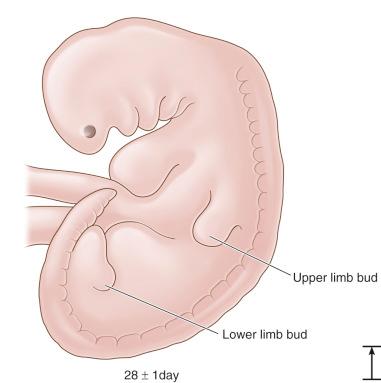
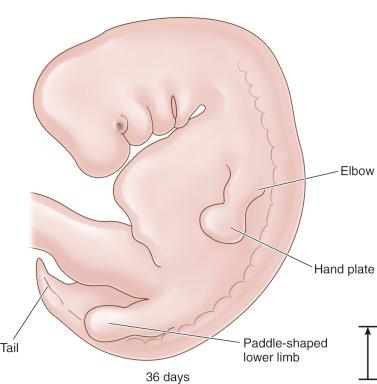
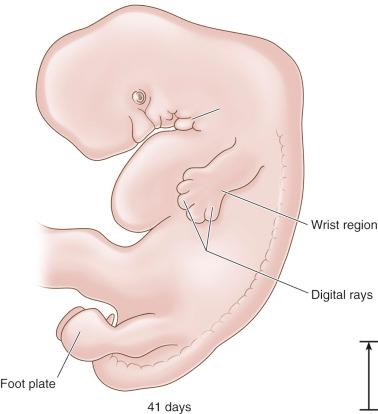

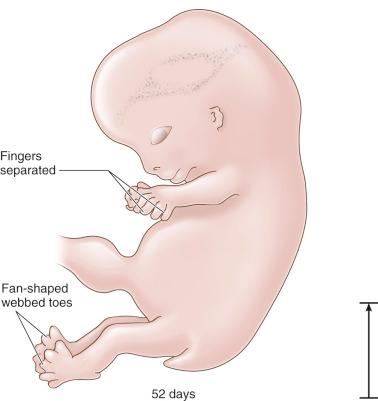

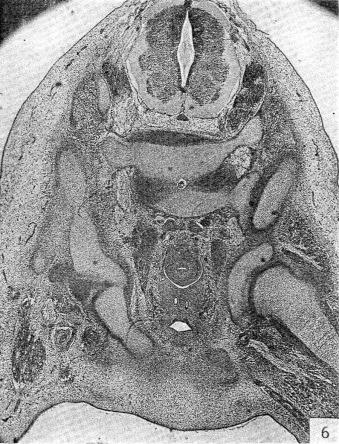
Femoral anteversion increases from 5 degrees in the 11th week to 45 degrees at 36 weeks’ gestation. Postnatally, femoral anteversion begins to decrease as the result of muscle forces acting across the hip joint. Normal postnatal femoral anteversion is approximately 30 degrees at 1 year and 15 degrees at skeletal maturity.
Become a Clinical Tree membership for Full access and enjoy Unlimited articles
If you are a member. Log in here